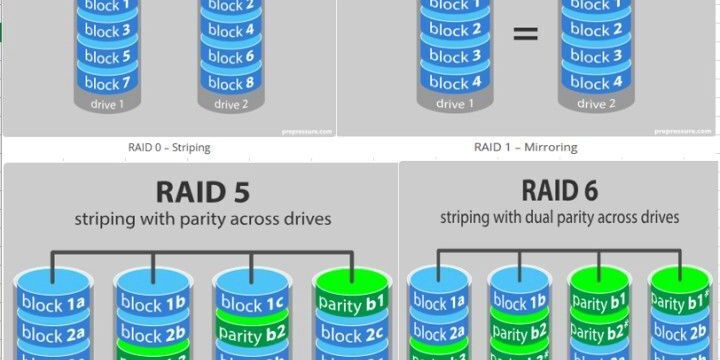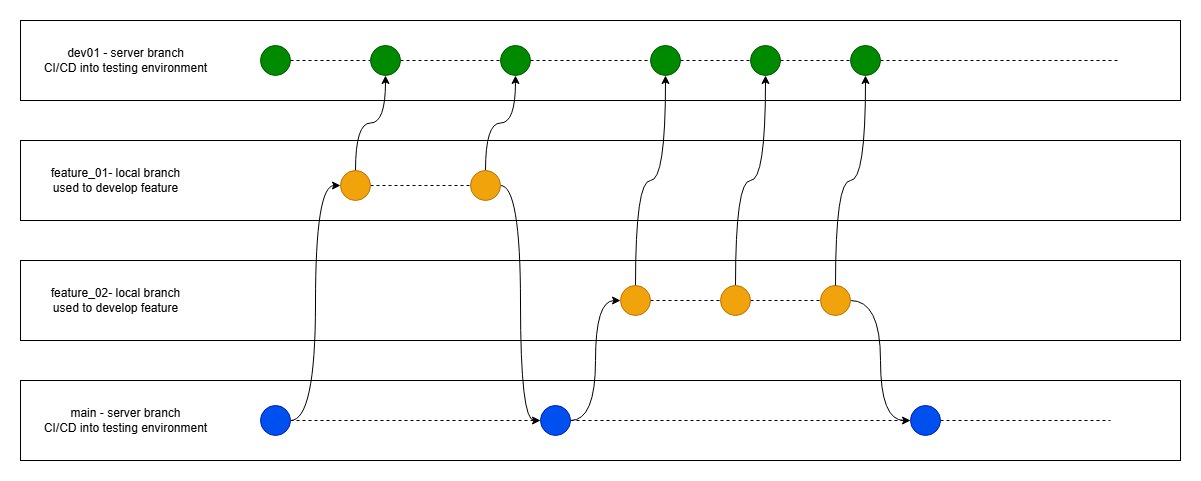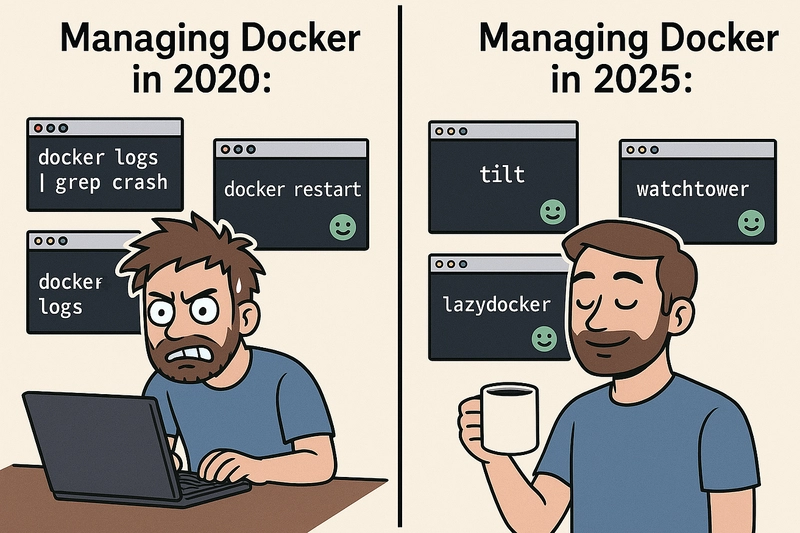Redundant Array of Independent Disks | RAID
RAID, which stands for Redundant Array of Independent Disks, is a technology used to combine multiple physical hard drives into a single logical unit to improve performance, increase data redundancy, or both. It’s commonly employed in servers to enhance reliability and efficiency There are several RAID levels, each offering different benefits: RAID 0 (Striping): This level stripes data across multiple disks, improving performance. However, it provides no redundancy, meaning if one drive fails, all data is lost. RAID 1 (Mirroring): This level duplicates data across multiple disks, providing redundancy. If one disk fails, the system continues to operate using the mirrored copy. RAID 5 (Striping with Parity): This level distributes data and parity information across all disks. It offers a balance between performance, redundancy, and storage efficiency. If a single disk fails, data can be reconstructed using the parity information. RAID 6 (Striping with Double Parity): Similar to RAID 5 but with additional parity for extra fault tolerance. It can withstand the failure of two disks. RAID 10 (1+0): This level combines RAID 1 and RAID 0, offering both mirroring and striping. It provides high performance and redundancy but requires at least four disks. Usage in Servers: In servers, RAID is used to ensure data integrity, enhance performance, and provide fault tolerance. For instance: Performance Improvement: RAID 0 can boost read and write speeds by spreading data across multiple disks. Redundancy: RAID 1, 5, 6, and 10 protect against data loss due to hardware failure, making them ideal for critical applications where data availability is crucial.

RAID, which stands for Redundant Array of Independent Disks, is a technology used to combine multiple physical hard drives into a single logical unit to improve performance, increase data redundancy, or both.
It’s commonly employed in servers to enhance reliability and efficiency
There are several RAID levels, each offering different benefits:
RAID 0 (Striping):
This level stripes data across multiple disks, improving performance. However, it provides no redundancy, meaning if one drive fails, all data is lost.
RAID 1 (Mirroring):
This level duplicates data across multiple disks, providing redundancy. If one disk fails, the system continues to operate using the mirrored copy.
RAID 5 (Striping with Parity):
This level distributes data and parity information across all disks. It offers a balance between performance, redundancy, and storage efficiency. If a single disk fails, data can be reconstructed using the parity information.
RAID 6 (Striping with Double Parity):
Similar to RAID 5 but with additional parity for extra fault tolerance. It can withstand the failure of two disks.
RAID 10 (1+0):
This level combines RAID 1 and RAID 0, offering both mirroring and striping. It provides high performance and redundancy but requires at least four disks.
Usage in Servers:
In servers, RAID is used to ensure data integrity, enhance performance, and provide fault tolerance. For instance:
Performance Improvement:
RAID 0 can boost read and write speeds by spreading data across multiple disks.
Redundancy:
RAID 1, 5, 6, and 10 protect against data loss due to hardware failure, making them ideal for critical applications where data availability is crucial.






































































































































































![[The AI Show Episode 145]: OpenAI Releases o3 and o4-mini, AI Is Causing “Quiet Layoffs,” Executive Order on Youth AI Education & GPT-4o’s Controversial Update](https://www.marketingaiinstitute.com/hubfs/ep%20145%20cover.png)



























































































































![[DEALS] Microsoft 365: 1-Year Subscription (Family/Up to 6 Users) (23% off) & Other Deals Up To 98% Off – Offers End Soon!](https://www.javacodegeeks.com/wp-content/uploads/2012/12/jcg-logo.jpg)




![From Art School Drop-out to Microsoft Engineer with Shashi Lo [Podcast #170]](https://cdn.hashnode.com/res/hashnode/image/upload/v1746203291209/439bf16b-c820-4fe8-b69e-94d80533b2df.png?#)








































































































(1).jpg?#)
































_Inge_Johnsson-Alamy.jpg?width=1280&auto=webp&quality=80&disable=upscale#)














































































































![Apple to Split iPhone Launches Across Fall and Spring in Major Shakeup [Report]](https://www.iclarified.com/images/news/97211/97211/97211-640.jpg)
![Apple to Move Camera to Top Left, Hide Face ID Under Display in iPhone 18 Pro Redesign [Report]](https://www.iclarified.com/images/news/97212/97212/97212-640.jpg)
![Apple Developing Battery Case for iPhone 17 Air Amid Battery Life Concerns [Report]](https://www.iclarified.com/images/news/97208/97208/97208-640.jpg)
![AirPods 4 On Sale for $99 [Lowest Price Ever]](https://www.iclarified.com/images/news/97206/97206/97206-640.jpg)

































![[Updated] Samsung’s 65-inch 4K Smart TV Just Crashed to $299 — That’s Cheaper Than an iPad](https://www.androidheadlines.com/wp-content/uploads/2025/05/samsung-du7200.jpg)


































































